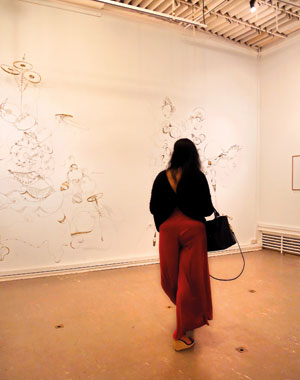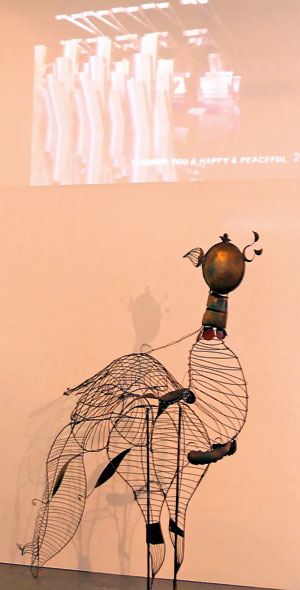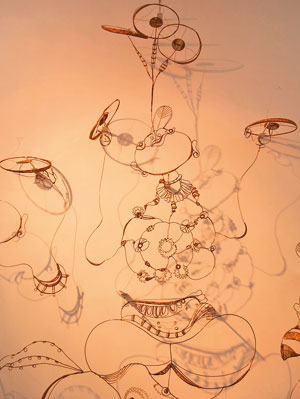Immersed in Tilak’s work
View(s):Italian architect Piero Trionfera reflects on Tilak Samarawickrema’s 50-year retrospective held last month

When a wall becomes a work of art
I met Tilak about a year ago, at a celebration for Bawa, together with other Sri Lankan architects. I was perhaps the only foreign architect there.
We started to chat and I rediscovered some of my roots: there is not a large age difference between us, and in the 70’s he lived in Rome, my city. It was inevitable that we would have similar memories of when Avant-Garde Italian design and architecture had reached a level of international standing, especially in Milan, a hot bed of intellectuals and emancipated industrialists, where Tilak had maintained close relations and interests.
So it was impossible for me not to be present at his 50-year retrospective as an artist, which he himself curated. It isn’t so much of a retrospective but a projection of a futuristic perspective.The choice of venue, the Lionel Wendt Art Gallery, implies a clear desire in Tilak to place himself in a modern, international niche, and this venue was absolutely perfect for his works and thoughts.
Right from the preview of the exhibition, the hall is full of interested and interesting people and I find myself immersed in his world.
I am ready to admire his films, sculptures and drawings.
The welcome I receive at the entrance, the gallery, the people, the “Mythical Bird” opposite me, all bring up in me, a sensation of tranquil familiarity. Then, I reflect and think, but of course, I am at an international-style exhibition, a type I hadn’t seen for a while in Sri Lanka.To the left, an audience sits admiring and commenting on the animated films of timeless quality as well as a series of photos of the artist in his youth. I am also enthralled by the backgrounds of the photos (I am biased, sorry). Besides being a historic testimony of his formative years, they are insights into “my” Rome.
I wander around the exhibition, amongst intellectuals, people of all kinds, elegant and middle-aged as well as sporty youngsters, locals and westerners. It is wonderful that at an art exhibition you can meet all sorts of people with different backgrounds and this is a tangible indication that the exhibition was a success.

The mythical bird and images from the past
On the walls, Tilak’s drawings stand out and I already know many of them, but it is always both a great spiritual and physical pleasure to admire the actual works of art.
The line of art here is the thin line in his sketches, which outlines figures and situations outside of time and schemes, but is strongly anchored to the Earth, figures which are clear, synthetic representations of characters, states of mind, and engaging moments.
The setting is nearly always Sri Lanka, but the style and representations go well beyond. Rather like him, an artist who is certainly bound to Sri Lanka, but who undeniably has international depth.Tilak offers us a world which is suspended between reality and fantasy in his drawings, which rarely have ground on which to stand, but are so ethereal to be able to soar in a gravity-free world, but are also material at the same time.
Substance and reality radiate from the representation of the nails of the hands and feet of his figures, like claws clinging to the earth: they are not angels, but real people. Sweetness and sensuality in the roundish shapes which call you like Omero’s(Homer’s) new mermaids – come with us, too!
On the furthest wall from the entrance are his sculptures – threadlike, continuous, dreamlike, imperceptibly moved by the motion and breath of the people admiring them. But it is not your imagination; the sculptures project shadows, and are therefore real. Light, tenuous shadows appear on the wall below and the whole wall becomes itself a work of art, in the work of art.
I have never seen Tilak at work, but I like to imagine him like those Chinese dancers who twirl rods with ribbons at the end in the air, drawing their dreams in the wind.



